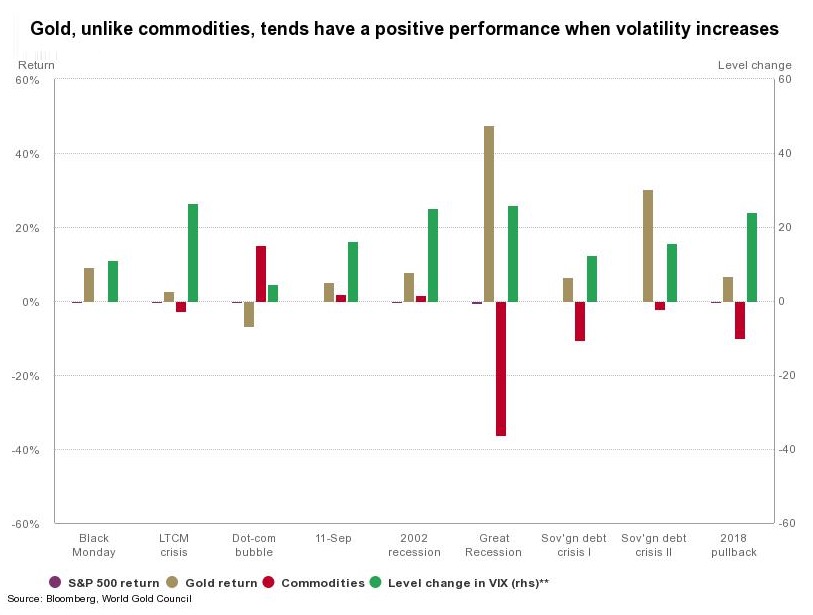The 8 times since Black Monday stock investors wish they’d held gold

Climbing higher on the back of safe haven buying, the price of gold camped out above $1,500 an ounce on Monday after the strike on Saudi oil infrastructure added further worries to already unnerved markets.
A recent study by the World Gold Council shows during times of stress on financial markets gold usually outperforms equities. In fact, the metal has done so during eight of the last nine shocks to financial markets starting with 1987’s Black Monday on Wall Street through to last December’s rout on US markets.
The WGC points out in a report looking at gold as a commodity investment, that the metal tends to find favour during good times but is also negatively correlated with other assets during so-called risk-off periods:
This dynamism reflects gold’s dual nature as both a consumer good and an investment. When economic conditions are benign, expenditure tends to increase on items such as jewellery or technological devices, and this works in gold’s favour.
During times of systemic risk, however, market participants seek high-quality, liquid assets that preserve capital and minimise losses. This can also benefit gold by boosting investment demand and driving up prices.
Last year stock markets suffered their worst performance since the Great Recession a decade ago, with almost all the selling happening in the final months of the year.
During the fourth quarter of 2018, the S&P 500 index of the largest US companies fell 14%, commodities fell 9%, but the price of gold rose 8%.

** The VIX is available only after January 1990. For events occurring prior to that date, annualised 30-day S&P 500 volatility is used as a proxy. Dates used: Black Monday: 9/1987-11/1987; LTCM: 8/1998; Dot-com: 3/2000-3/2001; September 11: 9/2001; 2002 recession: 3/2002-7/2002; Great recession: 10/2007-2/2009; Sovereign debt crisis I: 1/2010-6/2010; Sovereign debt crisis II: 2/2011-10/2011; 2018 Pullback 10/2018–12/2018. Commodities is the Bloomberg Commodity Index.
More News
Rio Tinto buyout target Arcadium posts loss on falling lithium prices
Rio Tinto plans to create a standalone lithium division after it completes the $6.7 billion acquisition.
February 27, 2025 | 02:10 pm
Panama’s ‘novel ideas’ comments offer hope for giant copper mine
Speaking to reporters in Panama City Thursday, Jose Raul Mulino said he will visit towns near the mine that have been affected by its closure.
February 27, 2025 | 11:00 am
{{ commodity.name }}
{{ post.title }}
{{ post.excerpt }}
{{ post.date }}



Comments